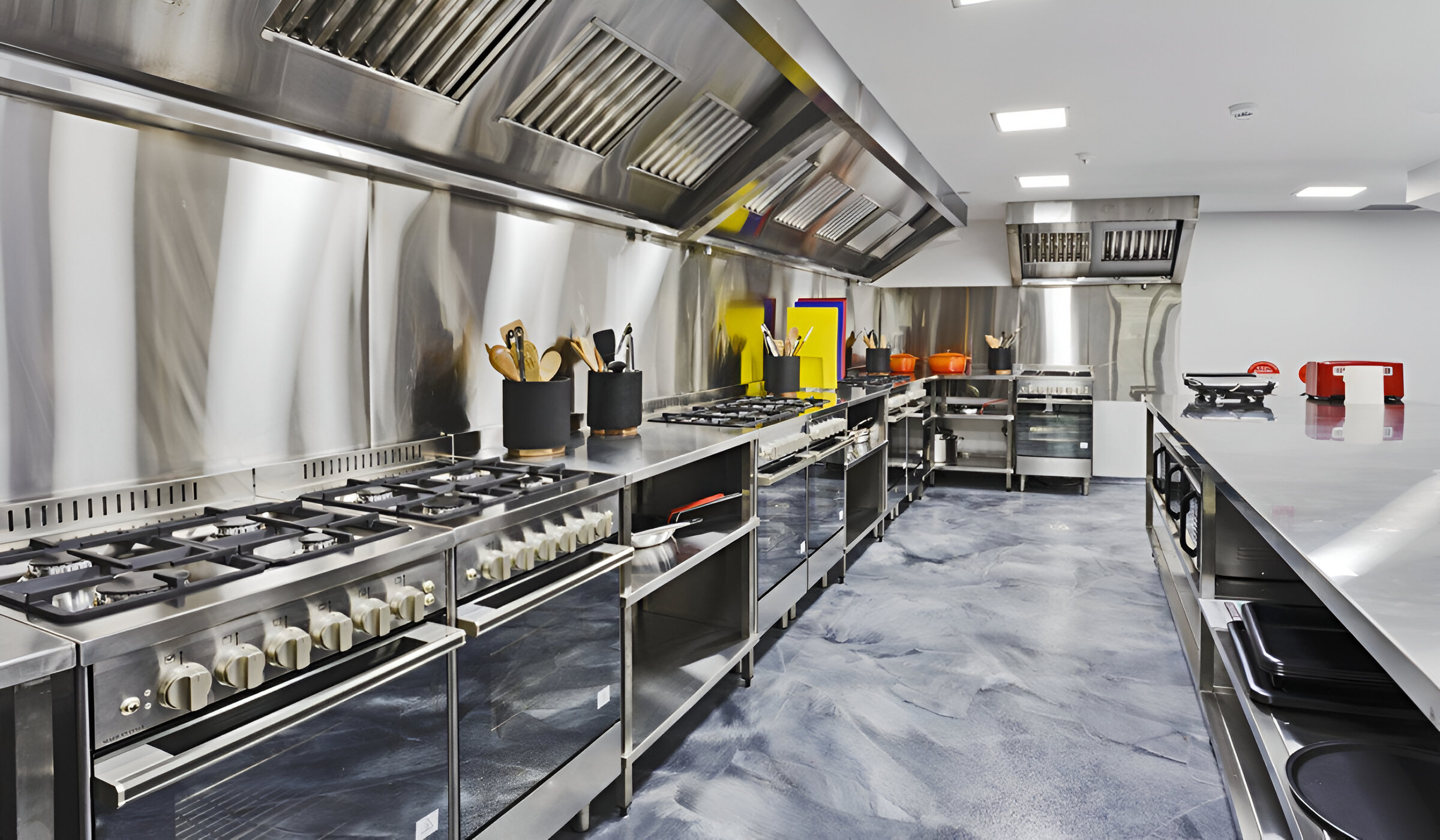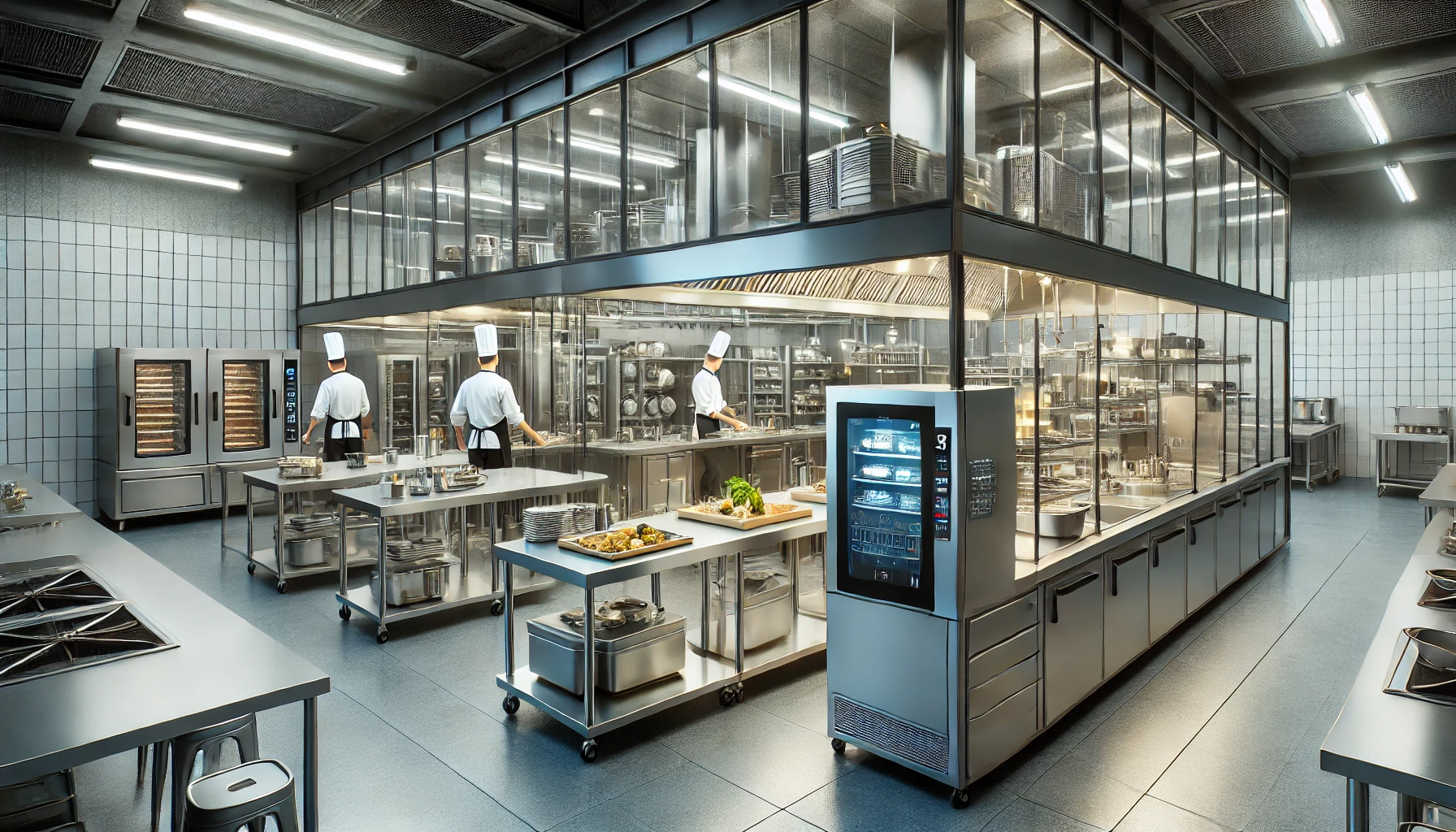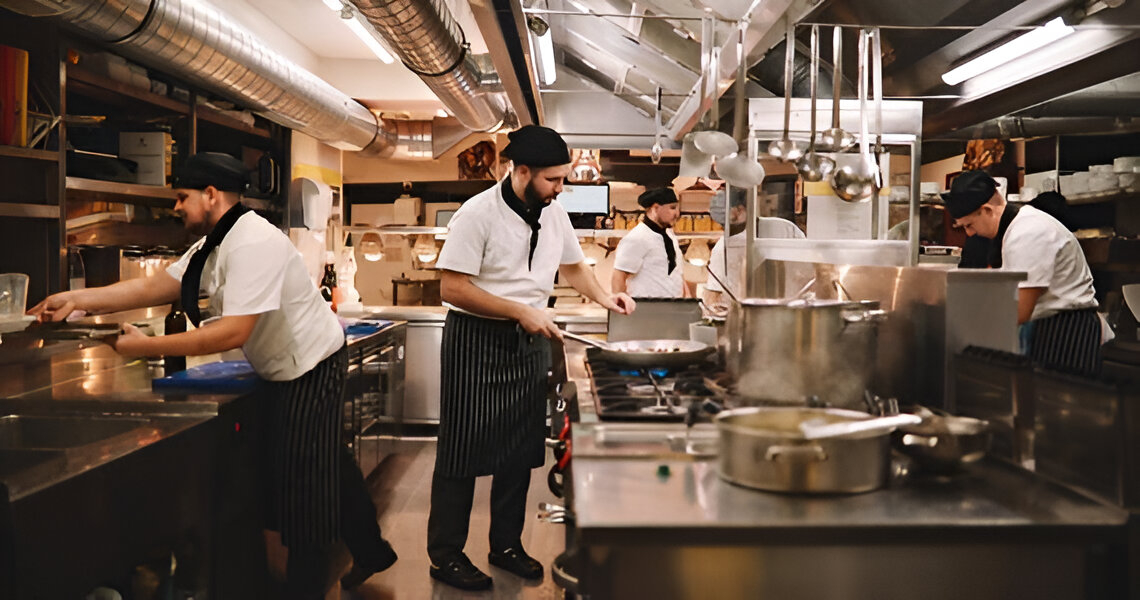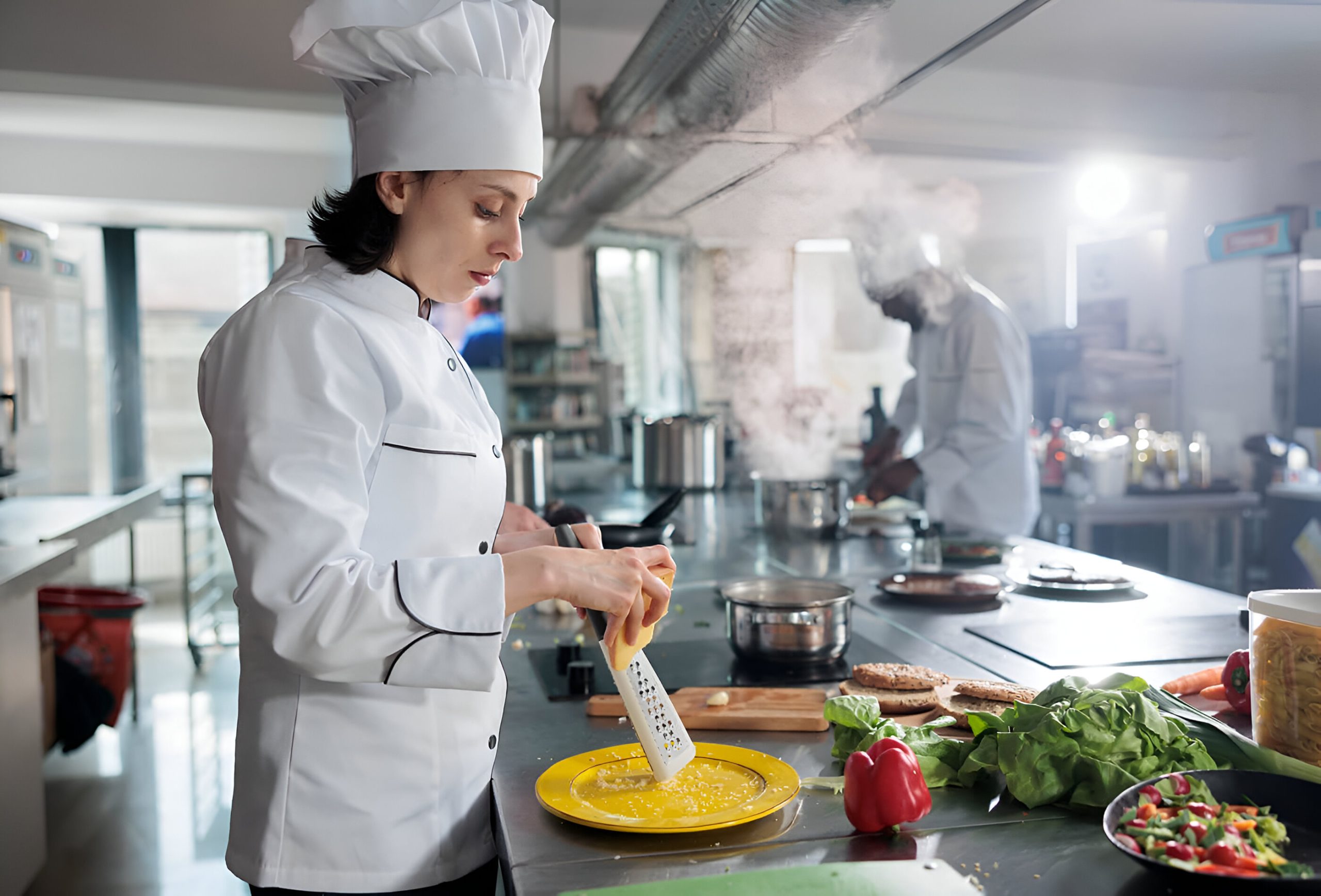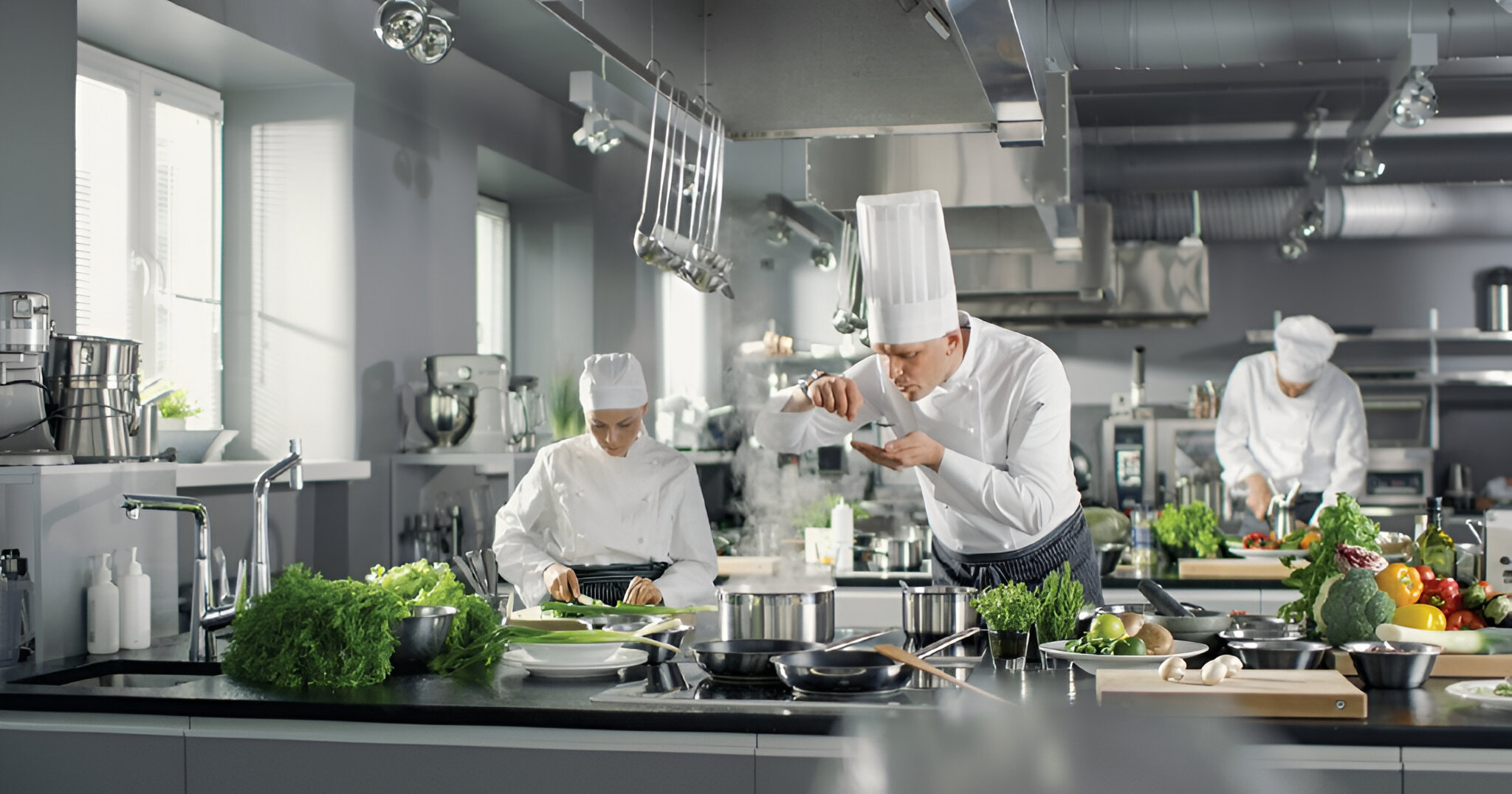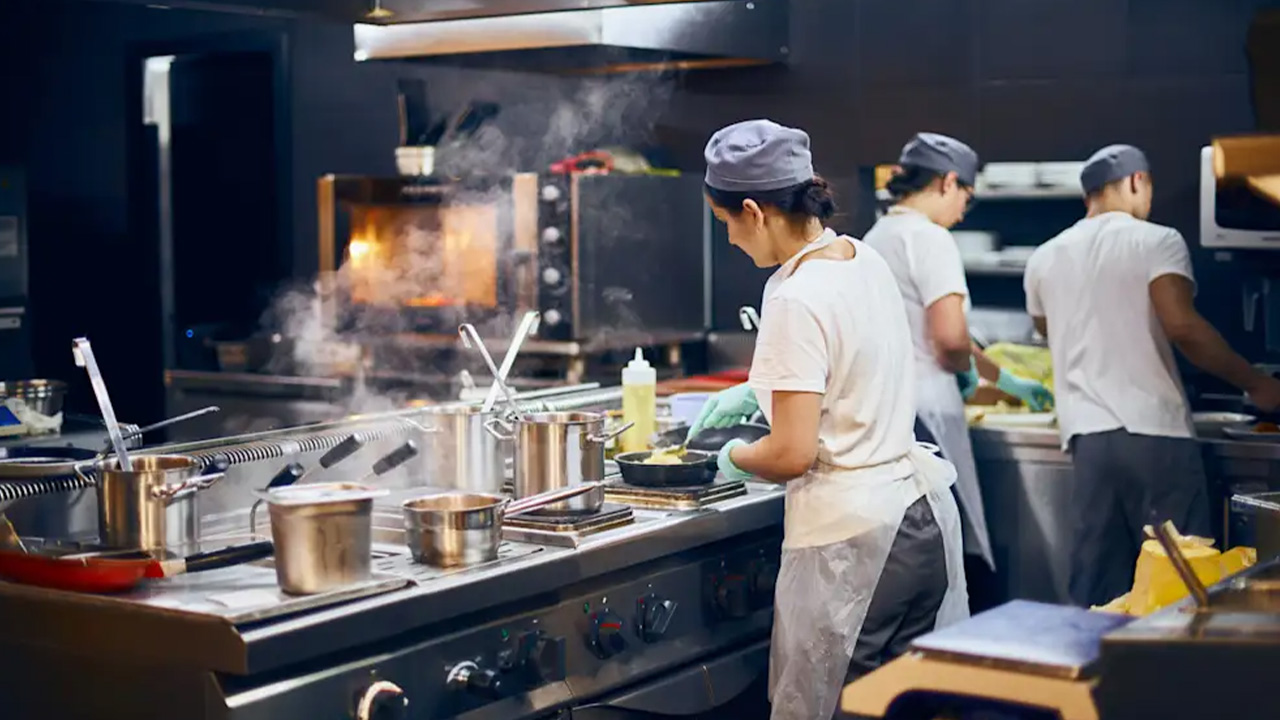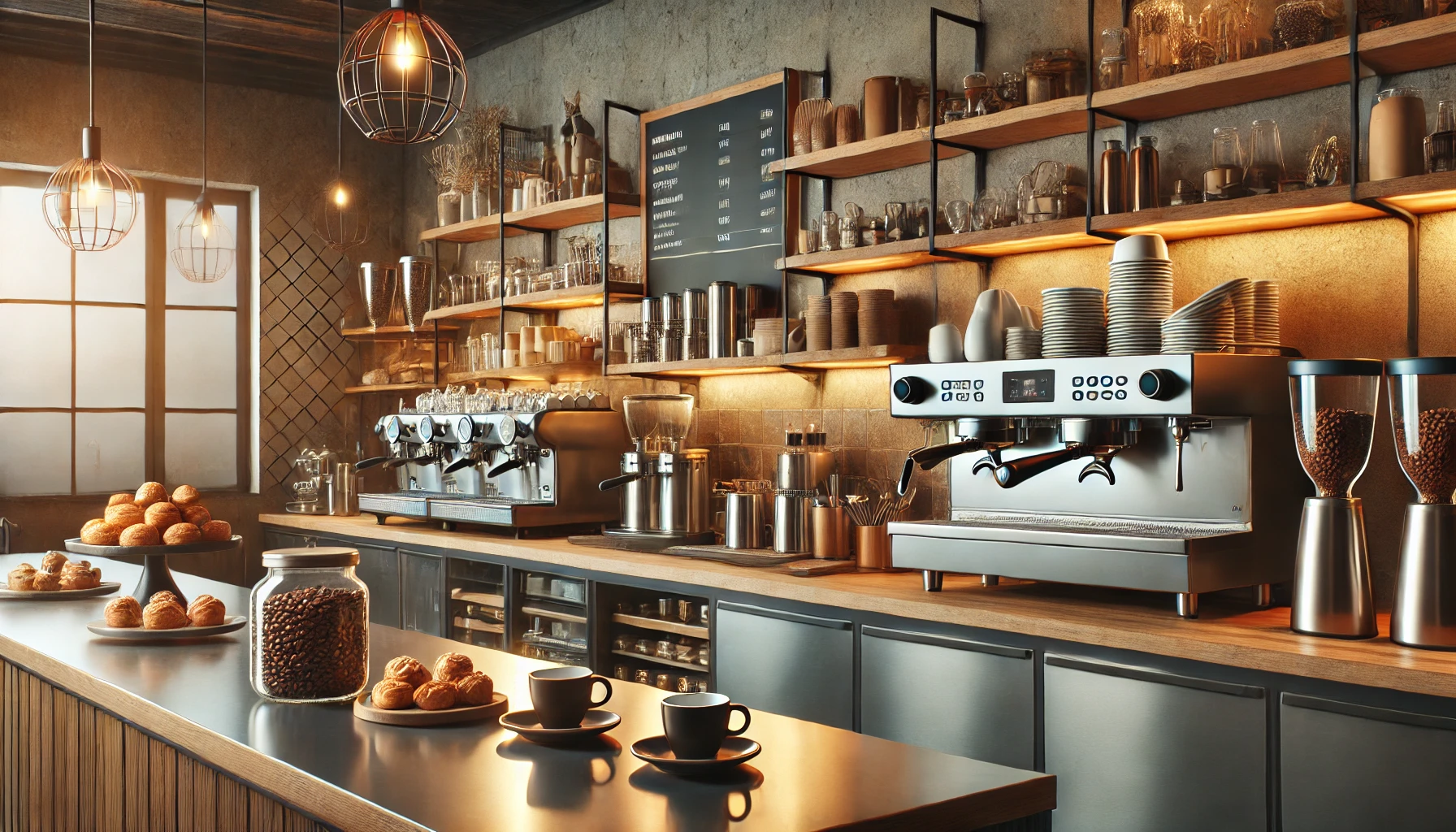
Elevate Your Business with Commercial Kitchen Equipment
Starting a restaurant business in India needs careful planning. A big part of this is the design of your commercial kitchen. Buying the right kitchen equipment is one of the leading startup costs. You must make smart choices about your kitchen tools. This is important for running things smoothly, keeping food quality high, and achieving success in your business.
Understanding Commercial Kitchen Equipment in India
Commercial kitchen equipment includes various tools and machines for cooking, storing, and serving large amounts of food. This type of equipment is different from what you find in home kitchens. It is built to strengthen, hold more, and perform specific tasks well.
Picking the right equipment can feel overwhelming. You need to do your homework. Make sure to choose equipment that fits your exact needs and budget. This way, your investment will help create a workspace that works well for you.
The Importance of Choosing the Right Equipment
In the busy restaurant industry, being efficient and consistent is very important. Choosing the right equipment affects these parts and, in the end, your profits.
For new businesses, commercial kitchen equipment can cost a lot, so you should look for equipment that is easy to use and takes little time to maintain. Equipment that is simple to operate and clean can help your kitchen staff learn faster and keep things running smoothly.
Also, good equipment makes the work environment better for your staff. When the design is smart, works well, and is dependable, it can lift spirits and increase productivity.
Types of Commercial Kitchen Equipment Essential for Indian Businesses
The types of equipment needed in a commercial kitchen usually depend on the food served and how big the restaurant is. Still, there are some basic tools that most Indian restaurants need.
For cooking, think about using tandoors for naan and kebabs. Griddles (tawa) are suitable for making roti and dosa. Deep fryers are great for snacks like samosas and pakoras.
For food preparation, having the right tools is important. Here are some must-haves:
- Mixers help knead dough, make batters, and whipping cream.
- Food Processors: These are useful for chopping, slicing, and grinding vegetables, spices, and meats.
- Grinders: These work to create fresh masalas and spice blends.
Setting Up Your Kitchen: A Beginner’s Guide
Setting up a commercial kitchen might feel like a big job, but it’s easier if you take it step by step. Begin by looking at your space, budget, and menu. This will help you make a good plan that fits your needs.
Focus on getting the essential equipment you need based on your menu. As your business grows, you can slowly buy unique items. Remember, a well-planned kitchen is key to running a successful food business.
Assessing Your Kitchen Space and Requirements
Before you choose any equipment, take a good look at your kitchen space. Think about the size, the layout, and the available utilities like electricity, gas, and water. A good commercial kitchen layout helps with workflow and reduces extra movements.
If you have a lot of space, you can fit in larger equipment and broaden your menu. But even small kitchens can work well with thoughtful planning and choosing the right equipment.
Make sure you have good ventilation, enough lighting, and proper storage. This will help create a comfortable and efficient space for work. You can also talk to a professional kitchen designer to help use your space better.
Essential Equipment to Get Started
Prioritizing the right kitchen equipment can help control startup costs. You can still have full functionality by focusing on what is necessary for your menu.
Here are some must-have items:
- Refrigerator: Keeps perishable food items fresh and stored at safe temperatures.
- Freezer: Important for storing frozen food and ice.
- Cooking Range: Useful for many cooking methods; pick between gas and electric based on your needs.
- Oven: Needed for baking, roasting, and finishing your dishes.
- Ventilation System: Removing heat and smoke helps keep your kitchen comfortable and safe.
While these items might need a significant investment initially, they are key to your kitchen’s success.
Step-by-Step Guide to Equipping Your Commercial Kitchen
Equipping your commercial kitchen takes planning and careful thought. Follow a clear process to ensure your investment leads to a usable and efficient space.
Start by deciding the kitchen’s layout. Think about how staff will work and move around quickly. Then, choose the most important appliances based on what you serve. Also, remember that you might want to add more equipment later as your business grows.
Step 1: Planning Your Kitchen Layout
The key to a good kitchen is a smartly designed commercial kitchen layout. Spaces not planned well can cause problems like delays, confusion, and even accidents. Think about how food moves from preparation to cooking and plating.
Your layout design should focus on functionality and efficiency. Position work areas logically to cut down the distance staff must travel during food preparation.
Safety is a top priority. Ensure enough space around equipment and clear paths for people to move. Proper ventilation and airflow are very important, too. They are needed to keep the space comfortable and safe for everyone working there.
–
Step 2: Selecting the Right Appliances for Indian Cuisines
Choosing the right kitchen equipment is very important. It mainly depends on what your menu offers. For Indian restaurants, some tools are a must because of the special cooking methods used.
If your menu includes traditional Indian breads like naan, roti, or dosa, buying a tandoor or griddle (tawa) is important. These tools use high heat and have a special surface that adds unique flavors and textures to the food.
Think about how much food you will be making. If you run a busy restaurant, you’ll need larger, commercial-grade kitchen equipment to meet the high demand. However, smaller cafes may need compact, multi-functional tools instead.
Step 3: Installing and Testing Your Equipment
Once you have your equipment, installing it correctly is very important. This is necessary for safety and how well it works. Hire qualified technicians to handle gas lines, electrical setups, and ventilation systems.
Make sure to test all equipment after it’s installed. This includes safety equipment like fire suppressants and emergency shut-off valves.
Remember that a commercial kitchen must follow strict health and safety rules. Check again to make sure all installations meet these standards. This helps you avoid health code violations.
Step 4: Training Staff on Equipment Use
Training your staff on how to use equipment is very important. Good training helps keep employees safe, reduces the chance of damaging equipment, and makes work run smoother.
Offer complete training on operating, cleaning, and performing basic maintenance on each appliance. This gives your kitchen staff the confidence to use the equipment well, which helps avoid accidents or wrong use.
Don’t ignore the need for continued training, especially when you get new equipment or add items to the menu. Regular refresher courses and updates on safety rules are key to keeping a safe and efficient restaurant business.
Maintenance and Care for Longevity
Investing in commercial kitchen equipment is an essential choice for any restaurant. To keep this equipment in good shape for a long time, you must maintain it regularly.
Set up a cleaning routine for all surfaces and appliances. This will help stop grease, food particles, and bacteria from building up. It keeps things clean and makes your equipment last longer.
- Regular cleaning helps hygiene.
- It extends the life of kitchen equipment.
Regular Cleaning and Maintenance Schedules
Regular cleaning is crucial for keeping a commercial kitchen clean and making your equipment last longer. You should set up maintenance plans that include daily, weekly, and monthly jobs.
Every day, you should wipe down surfaces, especially those made of stainless steel, as they are common in commercial kitchens. Be sure to sanitize cutting boards, utensils, and any other surfaces that come into contact with food.
Once a week, deep clean ovens, ranges, and fryers. Check and clean ventilation systems, exhaust hoods, and filters each month.
Troubleshooting Common Equipment Issues
Regular upkeep can stop most problems. Learning about common equipment issues can save you time and money later. Simple fixes often solve minor problems before they get bigger.
For example, your oven might have a bad thermostat if it isn’t working. This is a common issue and not too costly to fix. Also, if your freezer or refrigerator isn’t working well, it could be because the condenser coil is dirty. A simple cleaning can fix that.
By learning some basic troubleshooting skills, you can tackle minor problems quickly. This helps reduce waiting time and keeps your kitchen running smoothly.
Conclusion
In conclusion, choosing the right commercial kitchen equipment is crucial for your business’s success. Good equipment can help you work better and improve food quality while saving money. It is essential to know what your kitchen needs and to pick equipment that works well with Indian cuisine. By taking a step-by-step approach to set up and care for your kitchen, you can keep it working well for a long time. Regular cleaning, maintenance, and staff training are also needed to run smoothly. If you want to improve your culinary business, make smart choices about your equipment and take good care of it for lasting success.
Also Read:- Cafe Kitchen Setup: Design Tips for Success
For interesting Wedding Posts, follow us on Instagram.
